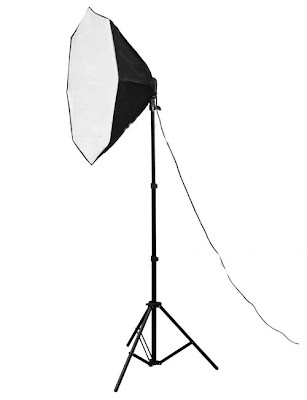Photography Light - Photography Lighting Basics That Will Help You to Improve Your Work
October 12, 2012
Photography is all about playing with light and shadows. The way you illuminate our subject will decide your results. Using the right photographic technique can certainly make a lot of difference in your photographs. Even if you are not a professional photographer and only use your camera on weekends, you still want to take best pictures therefore, it is necessary for every photographer to learn these tricks. Here are some lighting techniques that will help you to improve the quality of your photographs.
Always use a broad light source
The broader the light source, the softer will be light coming out of it. A broad light source will cast less shadows and suppress the texture of the object or subject, thereby making it look beautiful. Narrow Lighting accessories such as flash, CFLs, etc. do the opposite and are never recommended to use as such. You must broaden these sources by bouncing their light through a reflector or diffuser such as a softbox or umbrella. Using a broad light source is especially necessary for shooting portraits.
Place your light source close to your subject
The farther the light source, the harder will be the light falling on your subject. This is because, when the source is closer to you, it seems to be broadened, whereas when it is moved away, the broadness decreases, thereby becoming narrower. Make your subject stand close to your broadened light source so that your Studio lighting equipments illuminate your subject evenly and naturally.
Use front-lighting judiciously
Front-lighting is known to suppress the texture of your foreground, thereby de-emphasizing it. Therefore, front-lighting will be good for shooting portraits where it will help you to cover-up the scars and blemishes on the face of your subject. However, for a landscape photographer, instead of front-lighting, it is advisable to choose side-lighting that will help you to emphasize the texture of the rocks, sand, bricks, tree bark, etc.
Shadows give a three-dimensional look to your pictures
They are not always bad. When you use them judiciously, shadows can help you to give a voluminous look to your photographs, thereby projecting your subject to be in space and not on any flat surface. The three-dimensional look given by shadows make your pictures look real.
Keep the color temperature in mind while shooting
Even though light looks white, it has got colors. This is not detected by our eyes but the digital censors of the cameras record the color cast. While shooting, always keep this color cast in mind so that you don't spoil any important opportunity. During the early morning and late afternoon, the sunlight has a warm tone, whereas during the midday, it is bluish. The tungsten Lighting accessories cast yellow light, whereas the fluorescent ones give out a bluish light. If you don't want the color cast, use your camera's white-balance control to neutralize it.
Keep experimenting with your studio lighting equipments to keep discovering more such sweet secrets.








